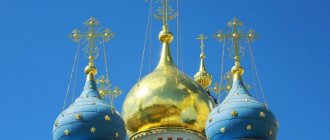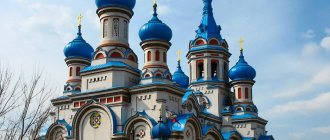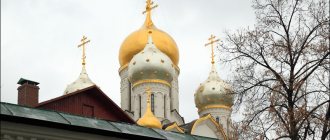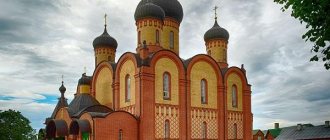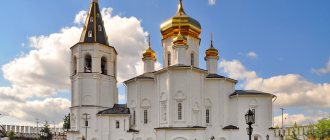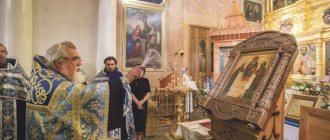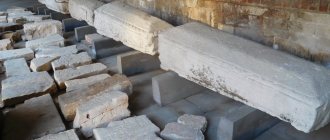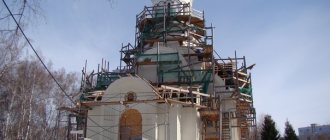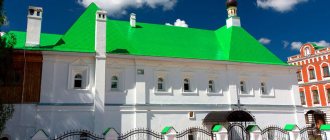It is called an “open-air museum” and is considered the first Christian country in the world. The Greeks and Romans left a bright mark on its architecture. Thousands of religious buildings and ancient artifacts can be found here, set among picturesque landscapes. Although Armenia is an Asian country, getting to know it is impossible without visiting its magnificent monasteries. Most date back thousands of years, and they are found in remote gorges, in the mountains, on peaks, in caves. Some are even partially carved into rock and rock cliffs. There are few tourists here, and the nature around is amazing.
We present to you a selection of the best sacred places in Armenia that are a must-see. By the way, we also look here every time we travel around this hospitable country.
Garni Temple
The monumental pagan pantheon of the Hellenistic era among the green mountains looks simply incredible! It is one of the oldest landmarks in the country. Garni itself, built in the 1st century, was destroyed along with its defensive walls as a result of a powerful earthquake in 1679. In 1949, it was literally pieced together. So what we now see is not a copy, but a reconstruction of the original. Dedicated to Mithra, the Sun deity popular in the Middle East.
Garni was built on the site of an Urartian temple. It repeats the dimensions of the latter (5.05 x 7.98 m) and represents a Greco-Roman peripetos. Nine wide steps lead to the inner sanctum. An Arabic inscription at the main portal to the prayer hall reports the capture of the fortress and its conversion into a mosque. The roof is supported by 24 columns: 6 on the front sides and 8 on the sides.
What to see in Garni
In addition to the pantheon itself, in the adjacent territory there are no less interesting and unique objects of antiquity: the fortress of the same name, khachkars, a garrison, a foundation stone, the ruins of the churches of Holy Zion and Mashtots Airapet, a summer palace, a cuneiform inscription of King Argishti I and the royal baths.
Separately, we note the canyon of the river. Azat is a miracle of nature with stunning steep slopes that seem to be made of giant basalt prisms. The canyon next to the temple is called “Symphony in Stone” and to see it, you just need to go down to the river.
Cost of visit and opening hours
On the last Saturday of every month, admission is free ;). The rest of the time the cost is 1200 drams (about 2.5 $) during the day and 1500 drams (3.1 $) in the evening. Excursion in Russian/English - 2500 drams ($5.2).
Schedule:
Tuesday - Friday: 9.00 - 22.00 (from May to November) and 9.00 - 17.30 (from December to April)
Sunday: 9.00 – 15.00
Closed on Monday.
How to get to Garni
You can get there from Yerevan by bus in half an hour and 0.5$. At the bus station on Gaya Street (behind the Mercedes showroom), you should look for routes 266 and 284. Also, taxis are quite affordable in Armenia and for a reasonable amount the driver will take you there and back. But we strongly recommend combining a visit to Garni with nearby Geghard.
Etchmiadzin Complex
The Mother Cathedral of Holy Etchmiadzin is the administrative center of the Apostolic Church. The monastery complex is located in the Armavir region, namely in the city of Vagharshapat.
This temple of Armenia is one of the oldest buildings in the world. The cathedral was erected and consecrated by Gregory the Illuminator in 303, after the adoption of Christianity as the state religion. It was built on the basis of an ancient pagan cathedral and became a symbol of the conversion of the people to the Christian faith.
Yandex pictures
According to legend, Saint Gregory the Illuminator was given a prophetic vision in which Jesus Christ descended from heaven and showed with his golden scepter the place where the church was to be built. Saint Gregory told the king his vision and, with the king’s support, founded the first Armenian Christian temple.
In addition to the Etchmiadzin Cathedral itself, the monastery complex contains no less beautiful buildings, namely:
- Church of Saint Hripsime. This is one of the oldest surviving churches in Armenia. The attraction was built in the 7th century under the leadership of the Catholic Komitas. Under the church are the relics of the martyr Saint Hripsime, after whom the chapel was named.
Yandex pictures
- Church of Saint Gayane. This domed basilica was built in the 7th century by the Catholic Ezra I. The temple has a magnificent entrance hall with three arches, which also served as a tomb for important gentlemen. The church is dedicated to the martyr - Mother Gayana.
Yandex pictures
- Shoghakat Temple. The cathedral was built in Armenia by Prince Agamal Shorotetsi in 1694 during the reign of Nahapet I. The name of the church means “light drips.” According to legend, a ray of light fell from the sky at the place where Christian nuns were tortured and killed before the adoption of Christianity as the main religion of Armenia.
Yandex pictures
Interesting fact: “In 2001, the Etchmiadzin monastery complex was included in the UNESCO World Heritage List.”
History of the Armenian Church in Russia
In Russia, the first Christian Armenian diocese was formed in 1717. Its center was located in Astrakhan. This was facilitated by the friendly relations that developed between Russia and Armenia at that time. This diocese included all the then existing Christian Armenian churches in the country. Its first leader was Archbishop Galatatsi.
The Armenian Apostolic Church itself was established in Russia several decades later, during the reign of Catherine the Second - in 1773. Its founder was Catholicos Simeon the First of Yerevantsi.
In 1809, by decree of Emperor Alexander the First, the Armenian Diocese of Bessarabia was founded. It was this church organization that controlled the territories conquered from the Turks in the Balkan War. The city of Iasi became the center of the new diocese. After the Treaty of Bucharest placed Iasi outside the Russian Empire, it was moved to Chisinau. In 1830, Nicholas the First separated the Moscow, St. Petersburg, Novorossiysk and Bessarabian churches from Astrakhan, forming another Armenian diocese.
By 1842, 36 parish, cathedral and cemetery churches had already been built and opened in Russia. Most of them belonged to the Astrakhan diocese (23). In 1895, its center was moved to the city of New Nakhichevan. By the end of the 19th century, Central Asian Armenian communities were also united. As a result, two more dioceses were formed - Baku and Turkestan. At the same time, the city of Armavir became the center of the Astrakhan diocese.
Geghard
The Geghard monastery complex is located northeast of the village of Gokht, on the slope of the Gokht tributary of the Azat River. This unusual architectural structure of Armenia is a temple carved from a rock in the gorge of a mountain river. The monastery complex was indeed half carved out of a granite monolith of rocks. Saint Geghard, the spear with which Christ was pierced, is kept here.
Yandex pictures
The complex consists of:
- Katoghike churches;
- porch;
- two rock churches;
- many chapels and tombs.
In 2022, at a meeting of the committee for the protection of cultural property in France, a unanimous decision was made to provide the monastery with enhanced protection. The Armenian monastery of Geghard has been included in the UNESCO World Heritage List since 2000.
Interesting fact: “The monastery has another name - Ayrivank. This is what is most often used in historical notes about the attraction.”
AAC at the end of the 20th – beginning of the 21st century
In 1966, Catholicos Vazgen the First created the New Nakhichevan and Russian dioceses. At the same time, the center of the Armenian Apostolic Church is transferred to Moscow. By the 90s of the last century, Armenians already had 7 churches operating in large Russian cities - Moscow, Leningrad, Armavir, Rostov-on-Don, etc. Today, many church communities of the former republics of the USSR are subordinate to the Russian diocese. It is worth adding that most modern Armenian churches are real architectural and historical monuments.
Garni Temple
The magnificent temple of Armenia with 24 columns in Garni is one of the unique structures preserved from pagan times. The main buildings of the complex were erected in the 13th century, so the building was made simultaneously in Greek, Roman and Armenian architectural styles. It is assumed that the building was dedicated to the Armenian god Mikhri, and the 24 columns symbolized 24 hours in a day. The Garni Temple stood in its original appearance for about 1600 years. The longest-lived building in Armenia collapsed in 1679 during the devastating June 4 earthquake. For almost 300 years the temple was in ruins. Over time, the surviving parts of the temple disappeared without a trace. The attraction, located in a picturesque place, had to be restored almost from scratch.
Yandex pictures
Work to restore the Garni Temple continued from 1966 to 1975. Not everything could be restored: there used to be small palace buildings next to the main building. Now the inside of the building is almost empty. The area around the temple was declared a historical and cultural reserve of Armenia in the 80s.
Old church in Armenia #3 Talin Cathedral
Talin Cathedral or Talin Catholic Church is a 7th century church located in the center of the cemetery of the city of Talin (Aragatsotn Province). The church was unique due to its architectural style.
Unfortunately, it is currently destroyed. Both the dome and a large part of the western wing collapsed. Talina Church includes two prayer rooms. Each of these rooms is covered by a secret passage.
Khor Virap
The name of the small church Khor Virap means “deep dungeon”. Khor Virap has important historical significance for Armenia. Here, by order of the Armenian king, Saint Gregory the Illuminator was imprisoned for 13 years.
When the king fell ill, his sister dreamed of an angel who said that his brother would be saved only after the release of Gregory the Illuminator. Thus, the king released the martyr, and the latter healed the king. Coming out of prison, the enlightener, with the support of the king, made Christianity the state religion.
Yandex pictures
Interesting fact: “Armenia became the first Christian country to adopt religion at the state level.”
Today tourists have the opportunity to go down into the underground dungeon, which is located inside the chapel at a depth of 6 meters. From the territory of the monastery there is a magnificent view of Mount Ararat.
Structure of the modern Armenian Apostolic Church
The highest authority in the AC is the Church-National Council. Currently it includes 2 Patriarchs, 10 archbishops, 4 bishops and 5 secular people. The AAC includes two independent Catholicosates - Cilician and Etchmiadzin, as well as two Patriarchates - Constantinople and Jerusalem. The Supreme Patriarch (currently the head of the Armenian Church, Karekin II) is considered its representative and oversees compliance with church rules. Issues of laws and canons are within the competence of the Council.
Noravank Complex
The literal translation of the name of the monastery is “new”. Despite the name, the age of the building suggests otherwise. Noravank was founded by Vahanavank Hovhannes 13 centuries ago. Noravank, one of the magnificent monastic complexes of medieval Armenia, located 120 kilometers from Yerevan.
The monastery rises in the gorge of the Arpa River, next to the red majestic rocks in the gorge. Many stone walls with the image of a cross and amazing views of the picturesque area are the distinctive features of Noravank.
Yandex pictures
The monastery complex consists of churches:
- Saint John the Baptist;
- Holy Mother of God;
- St. Gregory.
The last large-scale restoration work in the complex was carried out recently - in the 1990s. A pleasant bonus for guests is that the monastery is located on the way to other, no less popular, attractions of Armenia.
Differences between the Orthodox traditions of the AAC and the Russian Orthodox Church
For comparison with Russian Orthodox traditions, we will describe the baptismal rite adopted in the Armenian Church. There are not so many differences, but they still exist.
Many Russian Orthodox Christians who come to an Armenian church for the first time are surprised by the fact that candles here are placed not on special pedestals in small candlesticks, but in an ordinary box with sand. However, they are not for sale, but simply lying nearby. However, many Armenians, having taken a candle, leave money for it of their own free will. The believers themselves also remove the cinders.
In some Armenian churches, children are not immersed in the baptismal font. Simply take water from a large bowl and wash. Baptism in the Armenian church has another interesting feature. The priest, saying a prayer, speaks in a chant. Due to the good acoustics of Armenian churches, it sounds impressive. Baptismal crosses also differ from Russian ones. They are usually very beautifully decorated with vines. Crosses are hung on the cloth (red and white threads woven together). Armenians, unlike Russians, are baptized from left to right. Otherwise, the ritual of introducing a baby to the faith is similar to the Russian Orthodox one.
Haghartsin
The Haghartsin monastery complex is located in the Tavush region, about 18 kilometers from the city of Dilijan. A beautiful legend is associated with the genealogy of the name of the wicker monastery, according to which, during the opening and consecration ceremonies of the monastery, an eagle soared above the dome of the main temple, which served as the reason for the special name of the sanctuary.
The Haghartsin monastery complex was built in the 10th-13th centuries. It flourished in the late 12th and early 13th centuries under the leadership of Khachatur Taronatsi. The building is often mentioned in history as a leading educational center in the 13th century. This building is a real pearl of the canyon, one of the most mysterious places in Armenia, immersed in the greenery of the Dilijan mountain forests.
Yandex pictures
The Haghartsin complex consists of:
- three churches;
- two vestibules, one of which was destroyed;
- refectory;
- chapels;
- khachkar
On the territory of the monastery to the east of the main group of monuments there are chapels on a rocky slope - sculptural khachkars. In ancient times, metallurgical basics were taught here. The bronze cast iron cauldron found in Haghartsin is one of the highly artistic examples of artistic metallurgy. Now the country's cultural foundation is restoring the Armenian monastery of Haghartsin with the support of Sheikh bin Mohammad al-Qasim. Haghartsin's work is supervised by Dilijan National Park.
St. Petersburg Church of St. Catherine
Of course, there are churches belonging to this direction of Christianity in other cities of Russia. There are them in Moscow, and in St. Petersburg, and in some other localities. Of course, both capitals boast the most magnificent buildings. For example, a very interesting building in terms of historical and spiritual value is the one built in 1770-1772. Armenian church on Nevsky Prospekt in St. Petersburg. This is a very elegant, light structure in the style of early Russian classicism. Against the backdrop of austere St. Petersburg buildings, this temple looks unusually elegant and festive.
Of course, the Armenian church on Nevsky Prospekt looks very majestic. However, in height it is inferior to the Moscow church on Trifonovskaya Street (58 m). The interior of the St. Petersburg ancient church is truly magnificent. The walls are decorated with monumental paintings, stucco cornices, and partly lined with colored marble. The same stone was used to finish the floor and columns.
Goshavank
Goshavank Monastery is another ancient building in Armenia, surrounded by forested mountains in the resort town of Dilijan. In the 13th century, this object of Armenian architecture was a major religious, educational and cultural center of Armenia. In historical sources, Goshavank was called a college, university or seminary. Goshavank is a monastic complex unique in its style, incorporating all the advantages of medieval architecture. The buildings of the monastery complex are in harmony with the luxurious nature of the place.
Yandex pictures
The Goshavank monastery complex includes:
- three churches;
- two small chapels;
- a two-story bell tower with a library inside;
- ruins of a chapel and khachkars.
The Goshavank monastery complex was built from 1188 to the 13th century. Initially the monastery was called “Nor Getik”, but after the death of Mkhitar Gosh, the monastery Nor Getik founded by him was renamed “Goshavank”. The person after whom the temple was named is Mkhitar Gosh. The man was one of the great minds of his time - a jurist, theologian, chronicler, fabulist and teacher. The fame of his wisdom was so widespread that famous scientists from all over the world came to study with him.
Tatev Monastery
The Tat monastery complex is located in the south of the village of the same name, on the right bank of the gorge of a tributary of the Vorotan River. In the early Middle Ages it was called “The Testament of the Apostle Eustatius.” Founded in the 4th century, the monastery was a developed center of school writing in the 8th century. It was built gradually, mainly in the 9th century.
Yandex pictures
The walled monastic complex of Tat consists of:
- three churches;
- bookstore;
- refectory;
- bell towers;
- mausoleum and ancillary buildings.
The monastery also includes a churn, a spring and a school, which are located outside the main territory.
In 2010, the Tati Thiers cable car was built here, which connected the Tati Monastery with the village of Halidzor on the opposite cliff. Interesting fact: “The 5.7-kilometer cable car is listed in the Guinness Book of Records as the longest reversible cable car in the world.” Today, the Tata Monastery attracts the attention of tourists and pilgrims from all over the world with its magnificent view. It is one of the must-visit places for tourists.
What direction of Christianity does the Armenian Church belong to?
In the West, all Eastern churches, including the Armenian Apostolic, are considered orthodox. This word is translated into Russian as “Orthodox”. However, the understanding of these two names in the West and here is somewhat different. Quite a large number of branches of Christianity fall under this definition. And although according to Western theological canons the Armenian Church is considered Orthodox, in fact its teachings are in many ways dissimilar from Russian Orthodoxy. As for the Russian Orthodox Church, at the level of the ordinary priesthood the prevailing attitude is towards representatives of the AAC as monophysite heretics. Officially, the existence of two branches of the Orthodox Church is recognized - Eastern and Byzantine-Slavic.
Perhaps this is also why believing Christian Armenians themselves in most cases do not consider themselves either Orthodox or Catholic. A believer of this nationality can equally well go to pray in both a Catholic and an Orthodox church. Moreover, the Armenian churches in the world are actually not too numerous. For example, representatives of this nationality living in Russia willingly baptize their children in Russian Orthodox churches.
Sevanavank complex
Sevanavank Monastery is located in Gegharkunik region, on the San Peninsula. It is always crowded here, especially in the summer months. Residents of Armenia and visiting tourists relax on the shores of Lake San and at the same time visit the picturesque monastery complex. The observation deck of the small monastery offers a stunning view of the lake and the nature of the region.
Sevanavank has a rich history. The complex was founded by Grigor Lusavorich in 305, when the current peninsula was a full-fledged island, surrounded on four sides by truly blue waters. The two largest churches in the complex were founded in 874.
In the Bronze Age, the island was fortified with a fortress, and there was also a pagan shrine here. In the 9th century, the Syunik princes made the monastery their military base.
Yandex pictures
In 874, the daughter of King Ashot Bagratuni Mariam built two temples here:
- Church of the Holy Apostles;
- Church of St. John Garabed.
Previously, Sevanavank was a large historical and architectural complex, which, in addition to churches, included buildings for various purposes: a bookstore, guest houses, warehouses, refectories. The monastery was damaged by the earthquake of 1936, but since 1990 it has been revived and lives a full spiritual life.
The importance of the Armenian Church in the world
Historically, the formation of the Armenian Apostolic Church took place not only against the background of oppression from pagan and Muslim authorities of other faiths, but also under pressure from other, more powerful Christian Churches. However, despite this, she managed to maintain her uniqueness and the originality of many rituals. The Armenian Church is Orthodox, but it is not for nothing that the term “Apostolic” is preserved in its name. This definition is considered common for all Churches that do not identify themselves with any of the leading movements of Christianity.
Moreover, there were times in the history of the Armenian Church when many of its authoritative figures considered the Roman See to be superior. The attraction of the Armenian Church to Catholicism ceased only in the 18th century, after the Pope created his own, separate branch - the Armenian Catholic Church. This step marked the beginning of some cooling in relations between these two branches of Christianity. In certain periods of history, there was an inclination of the leaders of the Armenian Church towards Byzantine Orthodoxy. It did not assimilate with other movements only due to the fact that both Catholics and Orthodox Christians, to some extent, always considered it “heretical.” So the fact that this Church has been preserved almost in its original form can, to some extent, be considered God’s providence.
The Armenian Church in St. Petersburg, temples in Moscow and Yalta, as well as other similar places of worship truly represent real architectural and historical monuments. And the very ritualism of this direction of Christianity is original and unique. Agree that the combination of high “Catholic” headdresses and the Byzantine brightness of ritual clothing cannot but impress.
The Armenian Church (you can see photos of churches belonging to it on this page) was founded in 314. The division of Christianity into two main branches occurred in 1054. Even the very appearance of the Armenian priests reminds that it was once united . And, of course, it will be very good if the Armenian Apostolic Church retains its uniqueness in the future.
